Androgenic alopecia, also known as male pattern baldness, affects around 50 million men and 30 million women in the United States, according to the National Institutes of Health (NIH). This type of hair loss is caused by the shrinkage of hair follicles, disrupting the normal hair growth cycle.
Hair loss often leads to questions about its causes. One common belief is that testosterone, a hormone found in both men and women but at higher levels in men, is responsible for hair loss.
The connection between hair loss and testosterone is complex. There is a widespread belief that bald men have high levels of testosterone, but this may not be accurate.
This article explores the relationship between testosterone and hair loss to provide a clear understanding of this often misunderstood topic.
Contents
- 1 What is the Role of Dihydrotestosterone (DHT)
- 2 What is the Link Between Testosterone and Hair Loss
- 3 Androgenetic Alopecia: The Primary Cause of Hair Loss
- 4 High Testosterone Vs. Low Testosterone
- 5 Which Other Factors Contribute to Hair Loss
- 6 What Is A DHT Blocker?
- 7 Treatment Options for Hair Loss Due to Testosterone Fluctuations
- 8 Seeking Professional Advice
- 9 Takeaway
- 10 FAQs
What is the Role of Dihydrotestosterone (DHT)
Dihydrotestosterone (DHT) is derived from testosterone through the action of the enzyme 5-alpha-reductase. While testosterone itself is not directly responsible for the growth of scalp hair, DHT has a significant impact.
DHT interacts with hair follicles differently than it does with facial and body hair follicles. In individuals with a genetic predisposition to hair loss, DHT can bind to receptors within the hair follicles on the scalp. Over time, this binding can lead to a process known as miniaturization. During this process, hair follicles shrink and produce thinner, shorter hair strands. Eventually, the affected follicles may cease to produce hair altogether. This results in male-pattern baldness or female-pattern baldness.
What is the Link Between Testosterone and Hair Loss
Testosterone contributes to the development of facial and body hair during puberty. It stimulates the growth of hair follicles by promoting anagen (growth) phase and prolonging the hair’s lifecycle. In healthy men, testosterone levels range from 300 to 1,000 ng/dL.
Testosterone itself is not directly responsible for hair loss, however, it can accelerate the progression of male pattern baldness. This is because a small portion of testosterone is converted into dihydrotestosterone (DHT) by the enzyme 5 alpha-reductase.
If your body produces an excess amount of testosterone, it can lead to an increase in DHT production. This increase in DHT levels can speed up the effects of male pattern baldness, causing slow scalp hair growth and noticeable hair thinning to occur more quickly.
Initially, you may notice hair thinning and more hair growth on other parts of your body, such as your chest, stomach, and arms. Additionally, your scalp may become itchy due to inflammation.
Over time, this can progress into male or female pattern baldness. In male pattern baldness, hair loss occurs predominantly on the temple and crown regions. In female pattern baldness, the front hairline looks the same, but the top part is affected.
You can identify hair loss caused by high testosterone levels by observing the pattern of hair loss and other symptoms. It is recommended to consult a trichologist and undergo a thorough scalp examination to confirm the diagnosis.
Androgenetic Alopecia: The Primary Cause of Hair Loss
The most common form of hair loss in both men and women is androgenetic alopecia, also known as pattern baldness. It is a hereditary condition influenced by a combination of genetic and hormonal factors. Androgenetic alopecia primarily affects individuals who are genetically predisposed to dihydrotestosterone (DHT).
Hair loss isn’t driven by the level of testosterone or DHT present. But it’s the susceptibility of your hair follicles that matters. This susceptibility is established by your genetic composition. The AR gene is responsible for producing receptors on hair follicles that engage with testosterone and DHT. In cases where these receptors are highly sensitive, even trace amounts of DHT can activate them. This leads to increased vulnerability to hair loss. Additional genetic factors might also contribute.
Factors like age, stress, and other variables can influence the likelihood of hair loss. But genetic predisposition is pivotal. Men with male relatives who have male pattern baldness (MBP) are more likely to experience MPB.
High Testosterone Vs. Low Testosterone
The hair growth in our body is facilitated by follicles, which are small pores located beneath the skin, containing a hair strand. These strands have a growth cycle of 2-5 years, following which they enter a resting phase and eventually fall out.
Elevated levels of androgens in the body can lead to the production of DHT. It is a hormone that binds to specific proteins and shrinks hair follicles. As a result, the hair may start to thin, and new hair growth may be delayed. However, both low and high testosterone levels can contribute to hair loss. Even individuals with low testosterone levels may have the same amount of DHT, contributing to hair loss.
There is a link between low testosterone levels and hair loss, which can lead to thinning or loss of male hair, including facial and body hair. Hormonal imbalances in the body can directly affect the hair growth cycle. When free testosterone in the blood falls rapidly, it can negatively impact hair growth, usually leading to baldness in the front and crown regions.
Research shows that men with male pattern baldness have low testosterone levels, but average DHT levels. Some people have the same amount of DHT as others, but their hair follicles may be more sensitive to it due to genetic programming. This increased sensitivity may cause their hair follicles to shrink, making them more susceptible to hair loss.
Hair loss due to fluctuating testosterone levels and genetics is linked to androgenetic alopecia in both men and women. This condition follows a specific pattern and may eventually result in complete balding.
Which Other Factors Contribute to Hair Loss
In addition to genetic and hormonal factors, lifestyle and environmental factors can contribute to hair loss. Poor nutrition, stress, smoking, and certain medical conditions can impact the hair growth cycle and lead to hair loss. Consider these factors alongside testosterone and DHT when addressing hair loss concerns.
What Is A DHT Blocker?
The levels of hormones in our bodies are constantly fluctuating. DHT blockers work by targeting receptors that generate disproportionate levels of testosterone and slow them down. This can lead to the growth of a fuller head of hair.
DHT blockers can come in pill form or are included in specialized shampoos recommended by your doctor. You may also be advised to augment your diet, as a lack of vitamin B12 has been linked to hair loss.
Side effects of DHT blockers:
- Erectile dysfunction
- Ejaculating too early
- Excess fat around the breast area
- Darkened hair on the face
- Rashes
- Feeling sick
- Vomiting
- Ejaculating too late
- Heart failure
Treatment Options for Hair Loss Due to Testosterone Fluctuations
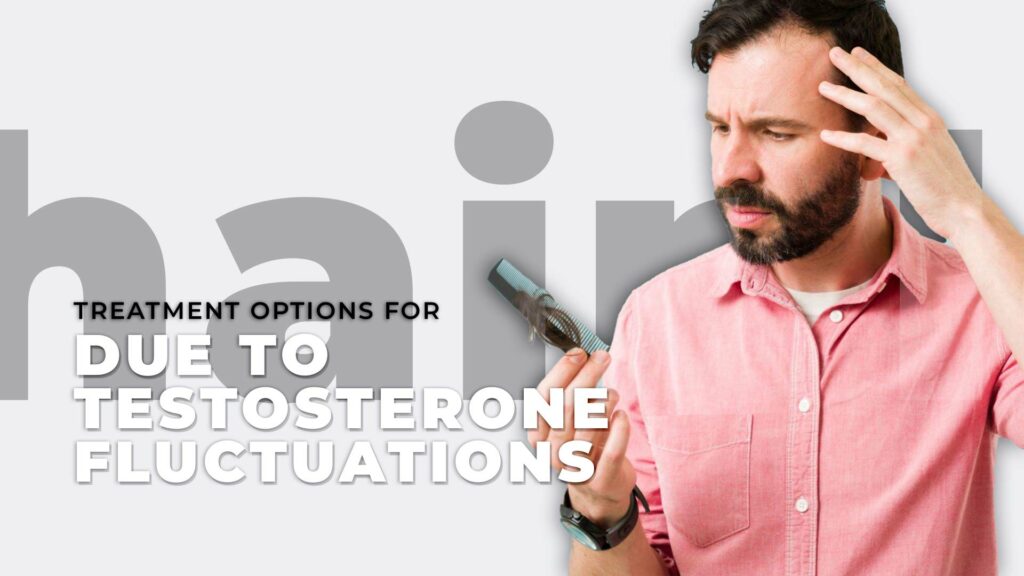
There are several medications and treatments that have been found to be effective in treating hair loss caused by DHT. They include:
Finasteride
Finasteride is an oral medication that has been shown to be effective in treating hair loss in men. Research indicates that finasteride has an 87% success rate in promoting hair regrowth in men. This medication is a blocker that binds to the 5-alpha-reductase enzyme to prevent DHT from binding to it.
Minoxidil
Minoxidil is a DHT blocker prescribed initially for patients with high blood pressure. Some patients who took it experienced excessive hair growth as a side effect. This drug typically widens blood vessels to improve blood flow. When applied topically, minoxidil can improve blood flow to hair follicles and promote hair growth.
PRP Treatment
PRP stands for platelet-rich plasma and is recommended for its non-invasive, safe, and effective approach. The patient’s own platelets are extracted and subjected to a centrifugal process, which converts the blood into protein-rich plasma containing growth factors that are beneficial for tissue healing. This plasma is injected into the bald patches on the scalp’s upper layer to promote hair regrowth. PRP has minimal side effects, making it a suitable option for treating hair loss caused by testosterone.
Hair Transplant Surgery
Hair transplant is a treatment for testosterone hair loss. It involves taking hair follicles from the donor area, typically the back or side of the scalp, and transplanting them onto the bald patches. Strip harvesting and FUE (Follicular Unit Extraction) are the two common procedures used for hair transplants.
Scalp Reduction
Scalp reduction is an invasive approach used to treat aggressive hair loss. It involves removing the bald patches on the scalp and stretching and repositioning the nearby healthy part of the scalp. This can significantly reduce the appearance of bald patches, but it may leave some small scars.
Biotin
Biotin is a vitamin B derivative that converts nutrients into energy, which is used by cells to perform their functions. Keratin is a protein that makes up the majority of hair, and biotin aids in its production. Research suggests that biotin can promote hair growth and prevent hair loss.
Pumpkin Seed Oil
Studies indicate that pumpkin seed oil can reduce hair loss in men with male pattern baldness. Pumpkin seed oil is a DHT blocker that prevents hair loss and thinning.
B Vitamins
B vitamins are essential for maintaining the health of your hair and scalp. A lack of these vitamins can result in hair thinning and, eventually, hair loss. They improve blood flow to hair follicles, and although they may not promote hair regrowth, they can prevent hair loss.
Seeking Professional Advice
If you are experiencing significant hair loss or have concerns about your hair health, it is recommended to consult a medical professional or a dermatologist. They can assess
- your specific situation,
- conduct tests if necessary, and
- provide appropriate guidance and treatment options tailored to your needs.
Takeaway
While testosterone is involved in the hair growth process, it is the conversion of testosterone into DHT and its effect on hair follicles that contributes to hair loss. Understanding the complex relationship between hormones, genetics, and other contributing factors is crucial in addressing hair loss concerns effectively. Seek professional advice to determine the most appropriate course of action for your individual situation.
FAQs
Is high testosterone directly responsible for hair loss in men?
No, high testosterone levels alone are not directly responsible for hair loss in men.
What is the role of DHT (dihydrotestosterone) in hair loss?
DHT, derived from testosterone, binds to hair follicles, causing them to shrink and leading to hair loss.
What hormone causes hair loss?
DHT (dihydrotestosterone) is the hormone primarily responsible for hair loss.
What does too much testosterone do?
Excessively high testosterone levels can lead to various effects on the body, but hair loss is not one of them.
Does creatine cause hair loss?
There is no scientific evidence to support the claim that creatine causes hair loss.
Does hair loss depend on hormone levels?
Hair loss can be influenced by hormone levels, but it is not solely dependent on them. Other factors, such as genetics and lifestyle, also play a role.
References
- National Center for Biotechnology Information (US). Genes and Disease [Internet]. Bethesda (MD): National Center for Biotechnology Information (US); 1998-. Male pattern baldness. Available from: https://www.ncbi.nlm.nih.gov/books/NBK22220/
- Nassar, G.N. & Leslie, S.W. (2022, January 4). Physiology, Testosterone. StatPearls. Retrieved from https://www.ncbi.nlm.nih.gov/books/NBK526128/
- Kinter KJ, Anekar AA. Biochemistry, Dihydrotestosterone. [Updated 2023 Mar 6]. In: StatPearls [Internet]. Treasure Island (FL): StatPearls Publishing; 2023 Jan-. Available from: https://www.ncbi.nlm.nih.gov/books/NBK557634/
- Could you have low testosterone? (2021, May 13). Retrieved from https://medlineplus.gov/ency/patientinstructions/000722.htm
- Kaufman, K.D., et al. (1998, October). Finasteride in the treatment of men with androgenetic alopecia. Finasteride Male Pattern Hair Loss Study Group. Journal of the American Academy of Dermatology. 39 (4 Pt 1), 578-589. Retrieved from https://pubmed.ncbi.nlm.nih.gov/9777765/
- Hu, R., et al. (2015). Combined treatment with oral finasteride and topical minoxidil in male androgenetic alopecia: a randomized and comparative study in Chinese patients. Dermatologic Therapy. 28 (5), 303-308. Retrieved from https://onlinelibrary.wiley.com/doi/abs/10.1111/dth.12246
- Justicz N, Derakhshan A, Chen JX, Lee LN. Platelet-Rich Plasma for Hair Restoration. Facial Plast Surg Clin North Am. 2020 May;28(2):181-187. doi: 10.1016/j.fsc.2020.01.009. Epub 2020 Mar 2. PMID: 32312505.https://doi.org/10.1016/j.fsc.2020.01.009
- Young Hye Cho, Sang Yeoup Lee, Dong Wook Jeong, Eun Jung Choi, Yun Jin Kim, Jeong Gyu Lee, Yu Hyeon Yi, Hyeong Soo Cha, “Effect of Pumpkin Seed Oil on Hair Growth in Men with Androgenetic Alopecia: A Randomized, Double-Blind, Placebo-Controlled Trial”, Evidence-Based Complementary and Alternative Medicine, vol. 2014, Article ID 549721, 7 pages, 2014. https://doi.org/10.1155/2014/549721

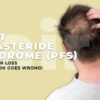



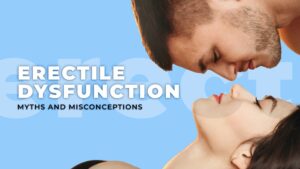
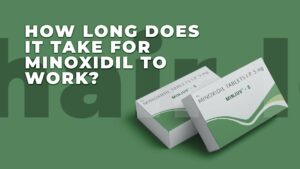
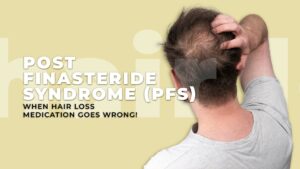


Leave a reply